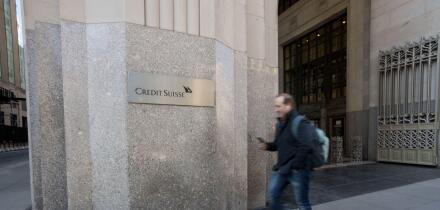Daily value at risk (DVAR) has grown in importance and has become the standard in evaluating the risk attached to a trader's position. However, this paper argues that there are cases when this is not the appropriate tool to assess the potential losses of an active money manager. We define an active money manager as a trader that has both a long and short mandate. More precisely, we establish DVAR and standard deviation of the profits and losses (P&L) under standard assumptions and highlight similarities and differences for a set of strategies. These theoretical results seem to be confirmed by an empirical application on the Nikkei stock index.
ACTIVE TRADING: NOTATIONS AND ASSUMPTIONS
Our assumptions, while staying simple and providing analytical results, incorporate one key aspect of active trading. That is, we view a trader's position as dynamic, not static. We argue our case for a linear pay-off, single asset and suppose the parameters to be known ex-ante. More explicitly, we suppose that:
(1) The underlying market returns Xt follow a normal
random walk without drift and volatility *.
(2) The trader follows some kind of active indicators
generating signal B, being either long or short one unit
in the market with equal 50% probability. The signal is
symmetrical in nature.
As a consequence the trader generates returns Rt = B Xt. Under the random walk assumption, the standard deviation of the trader's P&L is the market volatility * (Rt) = *. Let's now consider the daily value at risk of such a position and use one standard deviation of market returns to be consistent.
DVAR = *B**, and its expected value is: E(DVAR) = E(*B*) * = *. In this simple case the average daily value at risk is equal to the standard deviation of the trader's P&L.
Let us now consider a more realistic trading strategy. That is an equally weighted basket of two elementary indicators: Rt = (0.5 B1 + 0.5B2)Xt. This situation may be more realistic in the sense that when the trader receives conflicting signals, he decides to stay squared and does not take any positions. It is straightforward to show that now:
With DVAR = *0.5B1 + 0.5B2** and its expected value: E(DVAR) = * 2 Prob(B1 = 1, B2 = 1).
Therefore the ratio of daily value at risk divided by standard deviation of P&L is given by:
For clarity purpose, we express the ratio Y as a function of the correlation between the two strategies Corr(B1, B2) = 4 Prob(B1 = 1, B2 = 1) -1.The correlation coefficient is equal to +1 when the two rules are identical and -1 when they are opposite.
Figure 1 illustrates that the more dissimilar the trading rules, the bigger the divergence between daily value at risk and the standard deviation of P&L. DVAR tends to underestimate the true standard deviation of P&L and is not able to capture the trading effect, the switching from long to squared or short and vice-versa. Only in the previously mentioned case where B1 = B2 will Y be equal to 1.
A CASE STUDY
We investigate here the Nikkei stock index from December 9, 1996 to August 11, 1999 and assume the underlying volatility to be known and constant. For the sake of tractability, we choose as active strategies two trend-following indicators. The simplest rule of this family is the single moving average which says when the rate penetrates from below (above) a moving average of a given length m, a buy (sell) signal is generated. If the current price is above the m-moving average, then it is left long for the next 24 hours, otherwise it is held short. We will consider the single moving averages of length 2 and 117 both as individual strategies and equally weighted within a portfolio. This particular choice is purely arbitrary and for illustration purpose only. Table 1 shows that the theoretical formulae hold on quite well. Firstly, individual trading strategies exhibit similar volatility to buy and hold strategies. Skewness and kurtosis are fairly identical. As a consequence, the methodology being applied, either DVAR or standard deviation of P&L, will give identical loss estimates. Secondly, the ratio DVAR divided by standard deviation of P&L is roughly 0.75 for the portfolio of equally weighted strategies. This result was in fact expected from Figure 1 given that the theoretical probability that the two moving averages are long at the same time is 0.2755. The two strategies exhibit a slight positive correlation when applied to the Nikkei but this neither more or less than assumed by the random walk hypothesis1.
Figure 2 shows that although more accurate than DVAR, the standard deviation of P&L still underestimates historical losses at the 1% significance level. This is consistent with the fact that the distribution of P&L is this time highly leptokurtic2. The P&L distribution exhibits 'fat tails' which indicates a higher probability of larger P&L extremes.
SUMMARY
For active traders, DVAR might not be the relevant risk measure. The bias will come less from an erroneous estimate of market volatility than from the likely inability to capture the stochastic properties of the dynamic exposure. Our simple example has illustrated that DVAR is likely to underestimate the true standard deviation of returns and higher moments. The use of so-called arbitrage strategies may exacerbate such a phenomenon because the offsetting positions will reflect a smaller DVAR than the actual P&L of the two separate components combined. Indeed, negative correlation between strategies or traders might be a desirable feature but this may render DVAR a useless tool to estimate potential losses. Ample evidence of this occurred during the financial markets crisis of 1988 and recently in the swap spread blowout this month. Therefore, despite its complexity, it may be much more informative to study a trader's returns than the market volatility. Only in rare cases (i.e. passive investors) will a trader's DVAR and a trader's standard deviation of P&L be the same.
1 Acar, E. and Lequeux, P. (1996), "Dynamic Strategies, a
Correlation Study", in C. Dunis (Ed.) Forecasting
Financial Markets, Wiley, pp 113-123
2 Li, D.X. (1999), "Value-at-Risk Based on the Volatility,
Skewness and Kurtosis", Riskmetrics Group, Working Paper
This week's Learning Curve was written by Emmanuel Acar, proprietary trader at Dresdner Kleinwort Benson, and Richard Fullarton, proprietary trader at CDC Marchés, in London. The opinions expressed in this paper are those of the authors and do not necessarily reflect the opinion of their employers.






